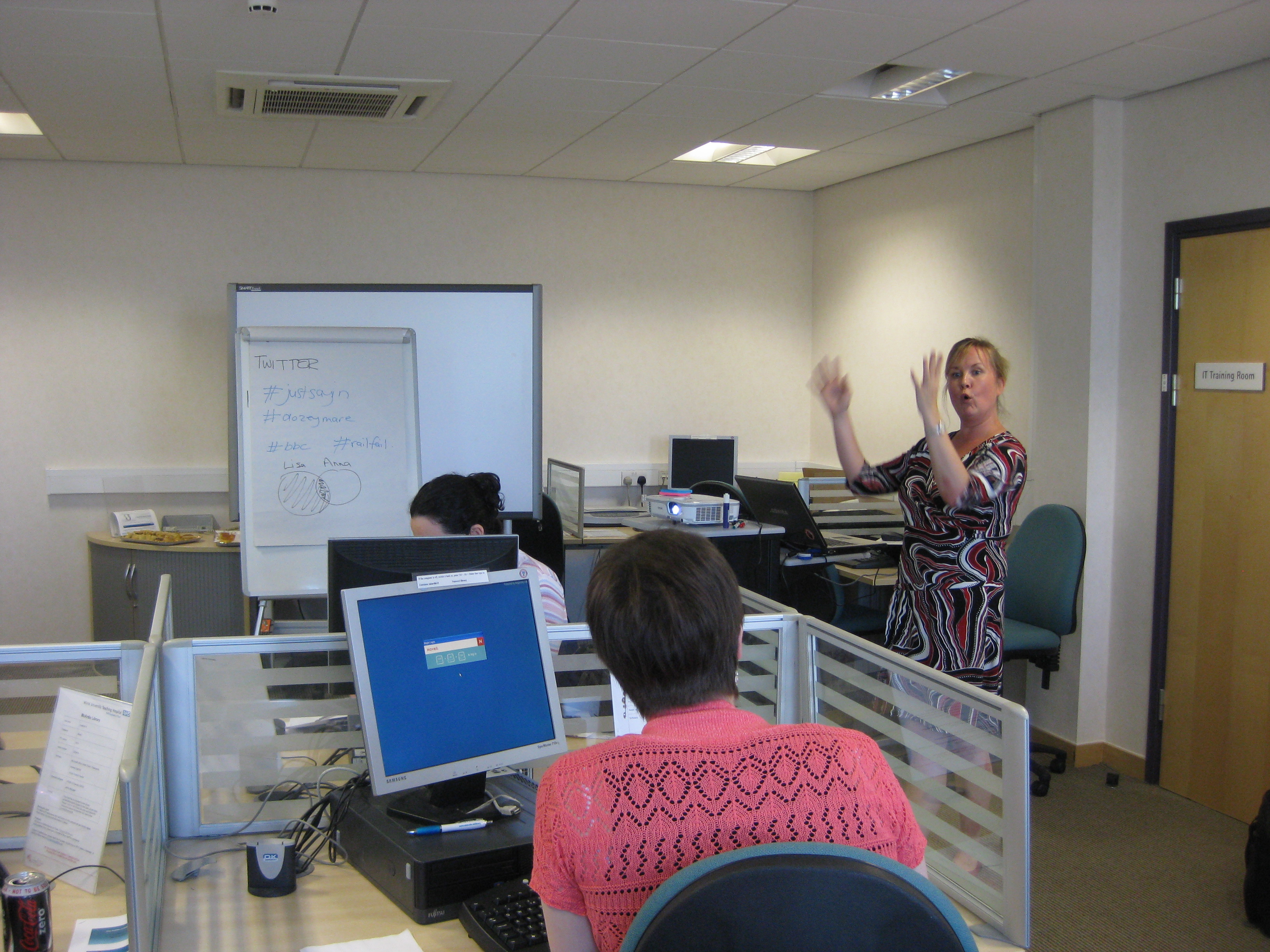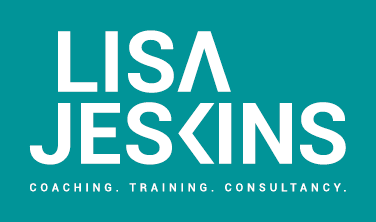(*Warning: there are no answers in this post and it’s pretty long)
It’s now 10 months since I went freelance. I run pretty interactive sessions as I don’t enjoy the chalk and talk approach. But the more training I do, the more I’m fascinated by group dynamics and what makes some people have a productive and dynamic discussion and what makes them shut down or have a negative discussion instead. What are the signs and what techniques can be used to promote conversation? I know that I aim to create a safe ‘place’ conducive to chatting and I can ask questions to stimulate more thought/ideas. I try and create interesting activities to elicit discussion. I often move people around to different groups to create a new dynamic. What I do works around 80% of the time but when it doesn’t work I’m left feeling a bit flat and that I should have been able to improve the situation.
I was reading Gaz Johnson’s (@llordllama) blog post the other day Keeping busy busy busy, and Gaz was talking about the lecture that he’d done on the Thursday and how the students were a little quiet at first. Well that got me thinking. And typing.

This is (pretty much) what I wrote in reply to Gaz.
Thanks for this post I really enjoyed it.
I wanted to chat about your teaching session. With my first full-time year of being a freelance trainer coming to a close, I’ve become fascinated by group dynamics and what sort of things you can do as a trainer/lecturer to get people to talk. (All I need now is the time to do some research on this.)
I remember about 5 or 6 years ago being asked to give a lecture for a 3rd yr programme of library science and computer science undergrads. I’d been out of traditional libraries for about 2 years at the time and had been mostly presenting to peers and was totally enamoured by interactive talkie sessions. (I still am really. 🙂 ) I made a rookie mistake and pitched the session exactly as I would for a conference workshop. Forgetting that our peers are really pretty chatty. And that undergrads aren’t. Rookie mistake. I’m not saying that I shouldn’t have included discussion but that I should have used better techniques and incorporated more warming up stuff. So what am I trying to say? Well it sounds as though you did a really good job. You got people talking, and it was the first time they’d met you. I had tumbleweed. Your students obviously really got into what you were talking about. Whereas I hadn’t thought it through properly and I hadn’t developed good hooks into my content.
Interestingly I had group divide and the library science students were pretty chatty whilst it felt, as I was stood at the front listening to the ominous silence, like the computer science students had never been asked a question before in their lives. There were a few (now obvious to me) reasons why. The library science students were mature students who were working and looking after families, so they had loads more confidence but also a definite mentality of I’m paying for this, it’s taking up a lot of my valuable ‘spare’ time so I’m going to get everything I can out of this experience. The computer science students were all about 20, so not much confidence in themselves and their opinions. They were also a huge mix of nationalities and so those students who weren’t from a Western education system were never going to voice an opinion in front of a room of other students. Losing face is a pretty big thing. (Actually I’ve done a session recently with library professionals from a mix of nationalities and although they enjoyed chatting in pairs and groups they wouldn’t give me an answer if I ‘asked the room’. So it’s not always an age thing). The room hindered as yours did, because it was in an IT suite. (Layout really helps discussion flow.) And the content I used wasn’t pitched in the right way to entice students into talking.
I find it fascinating to think about the fact that some groups will talk really easily and some won’t. I recently did 5 consecutive sessions of the same training which involved a lot of participatory stuff in the afternoon and I had different scenarios each day and even at lunch time, after spending a morning with the group, I couldn’t predict how ‘chatty’ they were going to be in the afternoon.
I’m not bad at getting people talking and I’ve had a bit of feedback where someone said I created a safe environment and they felt very comfortable talking. Which is obviously what I’m aiming for. But I don’t get it right every time and I want to know WHY? I realise that some of the stuff I do can be emotionally charged (change/customer service) and that can shut people down. I know sometimes it’s personality clashes and then I’ll mix groups up for further work. I am aware that sometimes there’s a whole raft of organisational culture baggage going on that I don’t know about. Some groups aren’t confident in themselves or each other.
But what else? How can I guarantee a great interactive session every time? (Can I do that? Or should I just accept that you can’t win them all?) Can I learn to examine a group and think ‘Ah I see the issue here, now I’m going to…’. If people aren’t talking I want to know how to fix it.
This is a really big ramble and it’s obvious that I don’t know the answers. But I’m going to find them. I’m going to do some reading and then I’m going to ask other trainers/lecturers questions. (you know, when I have time) Anyway I’ll let you know.
*******
So as you can see I’ve got some research to do. I want to look more in depth at group dynamics (beyond Tuckman’s Group Dynamics or Storming Norman as I like to call it * **) and more into the psychology behind what is going on and how I can make things better. I also want to know what you think?
- What have your experiences been?
- Do you train different types of people? Who talks most?
- What works in your groups? What doesn’t?
- What was your big learning experience when it came to getting people talking in your training?
- Do learning styles affect group discussion? (I realise some people don’t hold with them) If you happen to have a room full of theorists and reflectors, will they talk?
- Does organisational culture play a part?
I’d be really grateful for any insights you might have, or even a top tip!
* Totally showing my age.
** I may have told you that in a previous post.

It wasn’t a hijacking Lisa, it was a delightfully insightful comment on what was for me my regular navel gazing post 🙂 Then again having been out of teaching for 14 long months, I’d almost forgotten how much I missed it!
I may have mentioned it in my reply over on my own blog, but I think being able to do something about group size is a real enabler in terms of getting students talking. For training events you can probably define the numbers more easily – having experienced trying to work in a group larger than 6 on numerous occasions I know practically as well as theoretically that you’re running against a barrier. Of course you can always subdivide them, make use of additional space in the room(s) or even schedule them at different times.
You know, if you’re lucky enough to enjoy that kind of luxury.
But when you’re given an amorphous* assembledge of 24 undergrads, in a regular slot once a week, in a single room…well there’s only so much you can do. Soldier on, I guess is the most regular answer; although I’m told that attendance dwindles over the year drastically so maybe I’ll reach 6 students before I know it!
*Amorphous in composition not appearance or any other defining characteristic – they’re actually a rather lovely set of folks.
Thank you kind sir. Group size is interesting too and you’re right I have a lot more say on it. It depends on the session really and how flexible the room is. I usually set a maximum of about 20 for my sessions (Tech hands on I set a max of 15) but my ideal is about 12. I do like an even number, it makes pair work SOOO much easier. But then I can do group work with 3 groups of 4 which is a nice number for chatting. Pair work might be a way forward if the room is in rows. But honestly I like to do both for a bit of variety. Sometimes I get them to do pair work first as it’s less ‘overwhelming’ and prepares them for talking in groups later on.
I do think soldiering on is your best plan. 🙂 and you never know, they might enjoy it so much that you keep all 24 to the end! (Not only am I enthusiastic but I’m an optimist!)
Surprisingly, I think I’ve got less drop outs than other seminars so far. Either ‘cos they love my low pressure sales tactics, wonder about what accidental innuendo I’ll do next or actually are enjoying…nah, that last one’ll never happen.
I think the slight difficulty is I only get site of what I’m teaching around 36hrs before the sessions, so there’s not a whole lot of time to think “Ah, right, well if I do THIS that might make things more interactive”.
Pingback: For a Few Edits More | Llordllama's Research Ramblings
Really interesting post and comments. I have been a workplace trainer for 12 years, training groups of various sizes, age range, nationalities etc and I still find that I am not really able to predict what the group dynamics will be like. I think that you can build interactivity into your session plans in the form of small group and pairs activities and you can ask open questions in group discussions to try and elicit a connection between learners, but you can never guarantee that it will happen, despite your best efforts! It’s worth remembering that if a learner doesn’t want to engage, then you can’t force them.
Thanks for your comment! Makes me feel better. 🙂